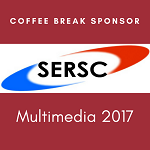
Biography
Biography: Ching Y Suen
Abstract
Handwriting is one of the most important media of human communication. We write and read every day. Though handwriting can vary considerably in style and neatness, we recognize handwritten materials easily. Actually humans develop their writing skill in their childhood and gradually refine it throughout their lives. This paper examines ways humans write (from primary school to adult writing) and ways of teaching the computer to recognize (handwriting technology) what they produce from ancient (such as carved scripts, old books and documents) to modern times (such as immigration port-of-entry forms, cheques, payment slips, envelopes, and different kinds of notes and messages). Methods such a machine learning and deep classifier structures, extraction of space and margins, slant and line direction, width and narrowness, stroke connections and disconnections will be analyzed with large quantities of data. Both training procedures and learning principles will be presented to illustrate methodologies of enabling computers to produce robust recognition rates for practical applications in the office and in mobile phones. In addition, the art and science of graphology will be reviewed, and techniques of computerizing graphology will be illustrated with interesting examples.

